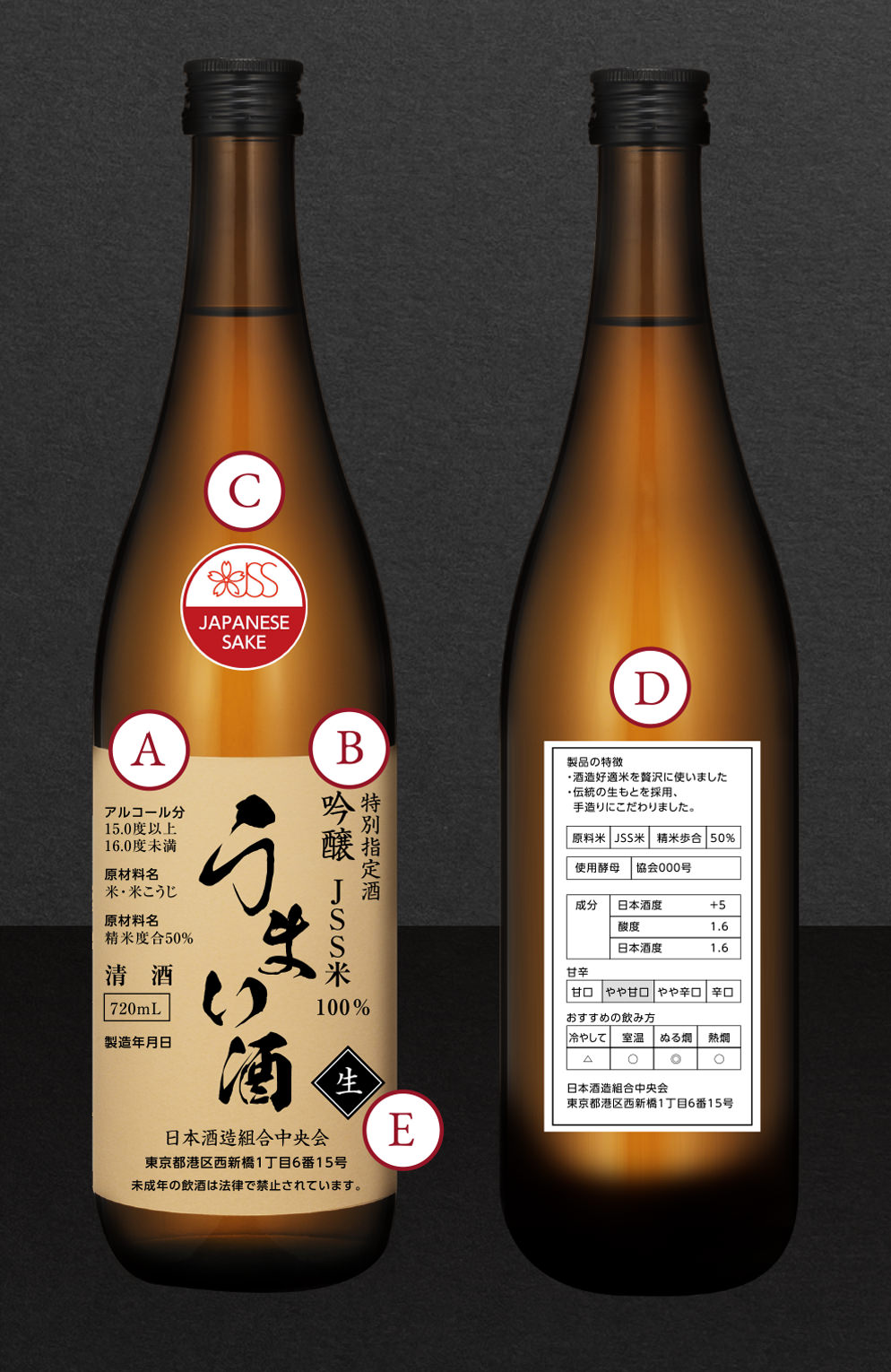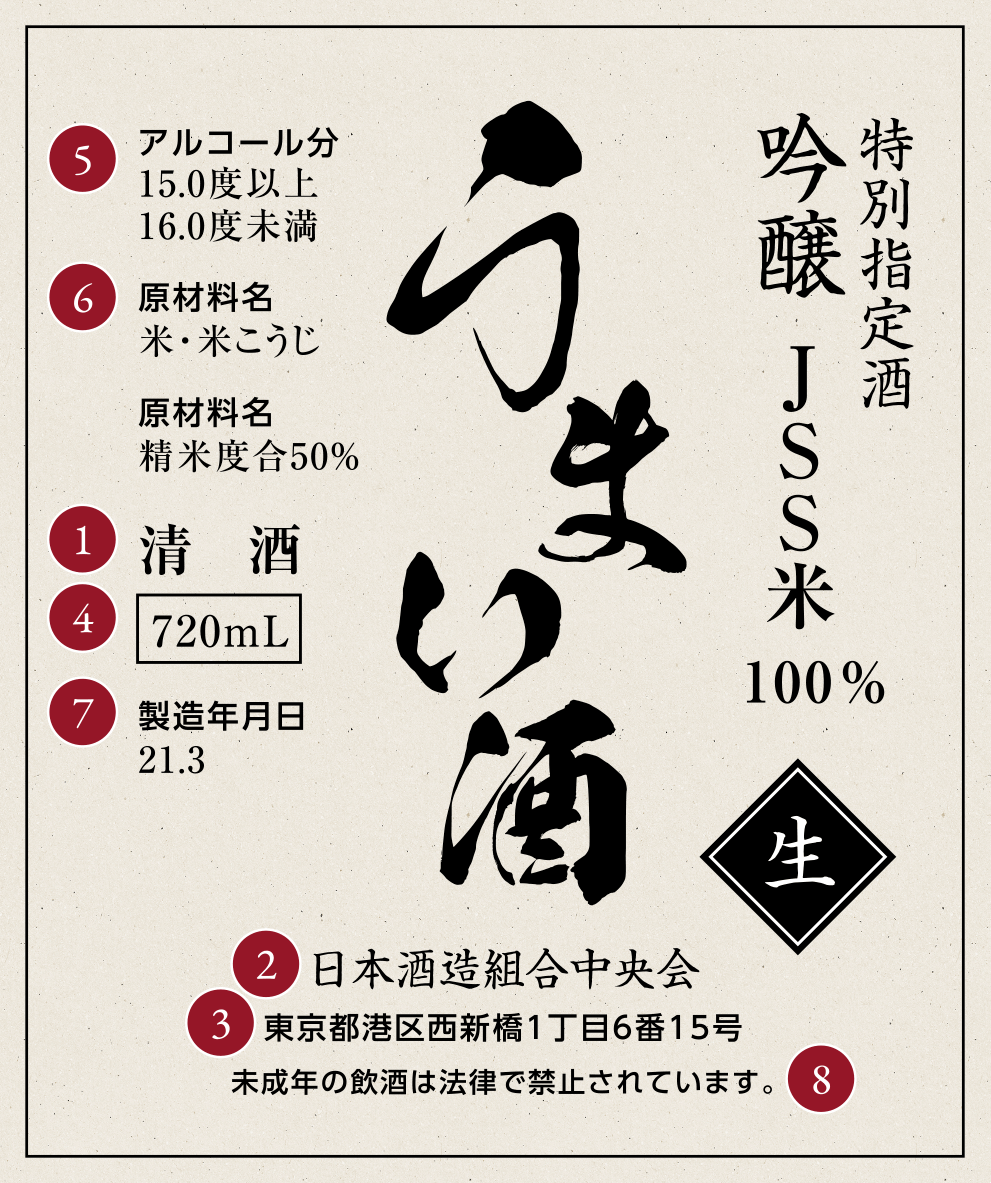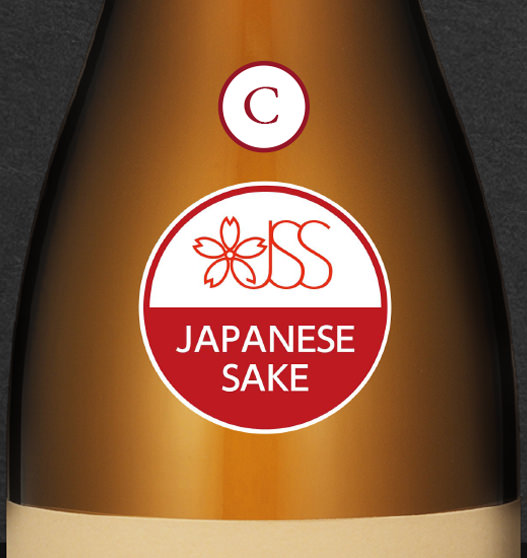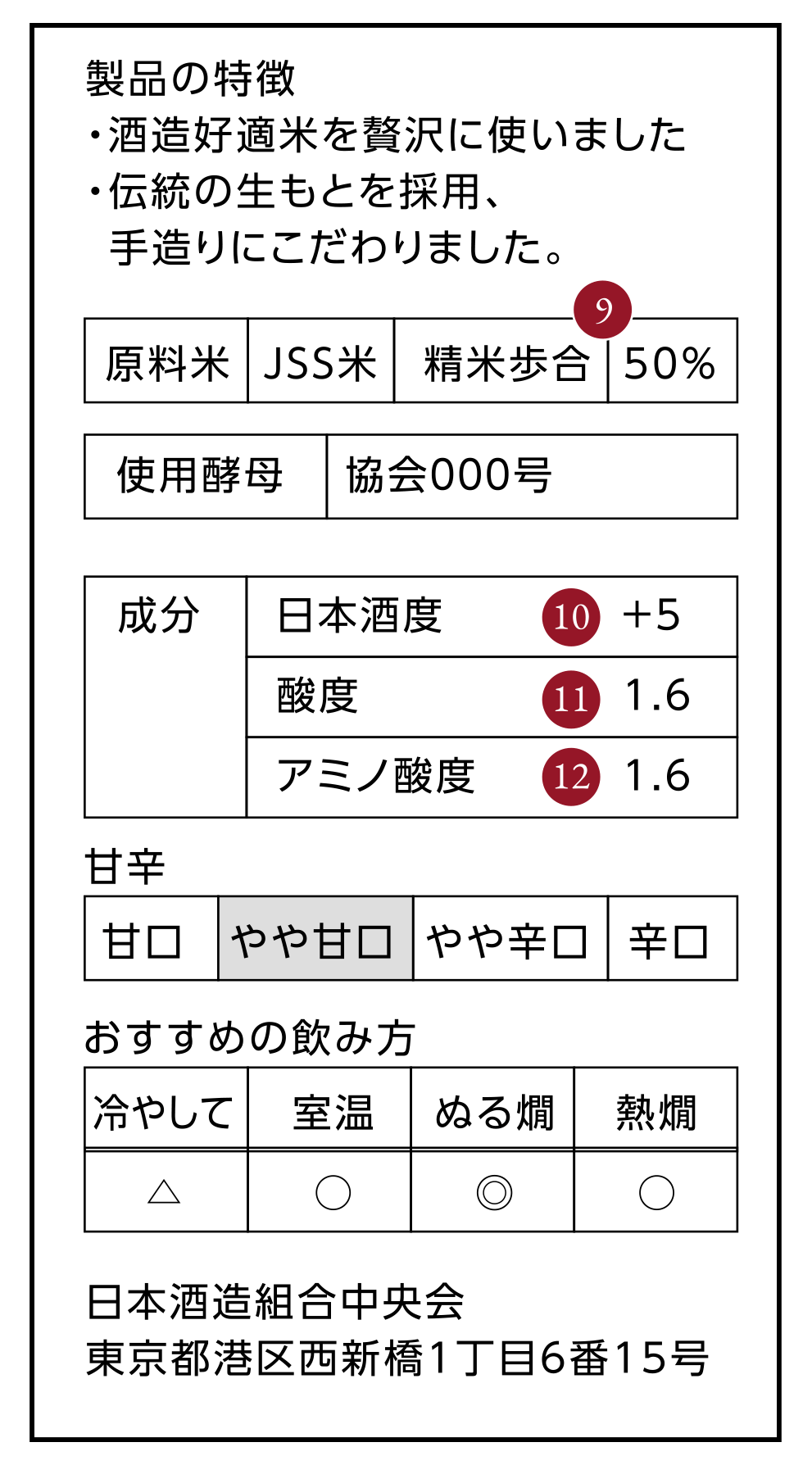Optional
Information
Some sake bottle labels indicate the detailed data of the product, therefore providing the buyer with more insight into the flavor and additional aspects of the sake.
Rice Milling Rate
The rice milling rate shows how much of a rice grain is left after polishing. For example, a polishing rate of 60% results in polishing away 40% of the rice. Therefore, the remaining grain is 60% of the original weight. Sake using highly polished rice tends to be lighter and also smoother in taste. However, this can lead to an increase in the price since it takes more rice to produce the same amount of sake. On the other hand, sake made with rice that is not heavily polished is generally richer in flavor.
Sake Meter Value (SMV)
The Sake Meter Value (SMV), or in Japanese the ‘Nihonshu-do’, indicates the density of sake compared to water. This value generally measures the sugar content and gives insight into how sweet a sake may taste. A low numerical value usually indicates more sugar in the sake, therefore SMV below zero suggests a sweeter taste. On the other hand, SMV above zero tends to be drier in taste.
Acidity
The acidity refers to the acid content in the sake. As such, a high numerical value signals that the sake is more acidic. Acidity in sake balances out the sweetness and gives a body in taste.
Amino Acids Content
The amino acid content refers to how much amino acids are in the sake. Therefore, a high numerical value is a sign that the sake contains more amino acids, resulting in a fuller flavor.
 Legally Required Information on Sake Bottle Labels in Japan
Legally Required Information on Sake Bottle Labels in Japan

 Special Designation
Special Designation

 Geographical Indication
Geographical Indication

 Optional Analytical Items
Optional Analytical Items

 Other Label Items
Other Label Items

















